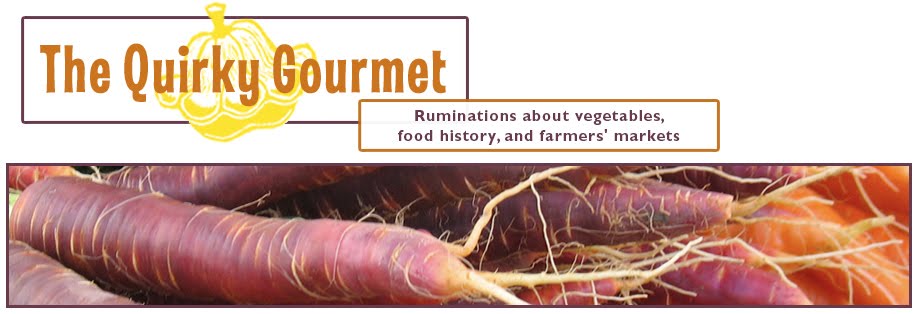I've been working with folks at the University of Washington to create a Humble Feast event on campus. We've got a group of about 25 students planning to prepare a tasty, affordable meal and serve it to a community of students interested in sensible food choices and local food economies. We'll be using the kitchen and dining room at the Husky Den, the eating establishment in the student union building.
The meal is supposed to be an educational event, showing some strategies for keeping costs low while using good ingredients. This poses an interesting challenge for me: I use creative purchasing arrangements to buy food in bulk for Patty Pan and I'll use many of these same ideas to buy ingredients for the dinner, but it's not always simple to translate these strategies so they're useful for students.
Patty Pan's purchasing model is based on buying leftovers directly from farmers at the end of each market day. This works for us as a business: we're insiders and we do everything we can to give back to the farmers whose surplus we're buying, from feeding them quickly when they're hungry to bringing back their waxed boxes. But many farmers I know become downright surly when customers try to buy produce cheaply at the end of a market day. (One farmer even answers affirmatively when customers ask for end-of-day deals, and then inflates the price as he calculates: a cluelessness surcharge, if you will.)
Why are farmers offended when customers ask for discounts late in the day? It's no secret that the food is perishable and may end up as compost or food bank donations. They're surly partly because they feel that the practice is unfair to the loyal customers who pay full price throughout the day. In addition, the act of asking for any discount--at least in this culture--implies that you don't feel the product is worth its original price, and folks who spend all of their summer daylight hours trying to keep their farms healthy and solvent resent the insinuation that their produce isn't worth the amount they typically charge.
Most farmers I know say they can grow a lot more than they can sell, but unless they stretched themselves too thin vending at too many markets or increased sales by lowering their prices, they wouldn't be able to sell the additional produce. Lowering prices would be counterproductive because it would involve investing even more time and labor to earn the same amount of money.
Some of this surplus is a necessary, built in part of the food and agricultural systems as we know them, both on small and a large scales. Most customers want food that's cosmetically appealing, rather than wilted or full of bug holes. Farmers never knows exactly what's going to sell--or even exactly what's going to grow abundantly--so they hedge their bets and grow a range of options, leaving the less successful beds unpicked.
There must be a way to bridge the gap and use some of this wasted food to help folks who want to eat well but can't afford it, while also offering farmers a financially viable business proposition. I think the answer lies in finding the sweet spot where it's worth it for a farmer to part with these leftovers for a lower price, bringing in some extra income without cutting into regular farm revenue. It also helps to approach the issue with sensitivity and respect.
For the UW Humble Feast dinner, we're organizing a gleaning outing to the university farm. We'll be paying the farm to let us come pick. There's a bed of chard slated to be plowed under: the don't have the labor to pick it or a customer who would buy it but it's lovely chard, and we're going to use it all.
I love the idea of paying to glean, and I wonder what other kinds of applications it could have.
By the way, if you want a good deal at the end of a market day, show that you're a loyal customer by buying regularly, don't ask outright, and don't expect it. You may not get that price break every time, but I bet it'll happen sometimes.


